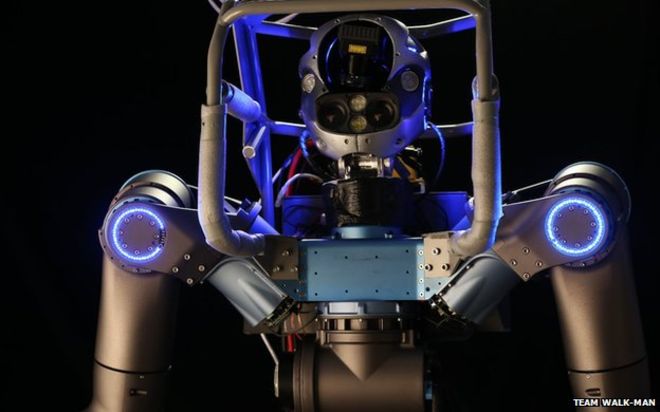Final preparations are being made by 24 robotics teams about to compete for $3.5m (£2.3m) worth of prizes in a Pentagon-backed competition.
Their machines are being challenged to carry out a series of disaster-related tasks in the shortest time possible.
The US Department of Defence's Darpa research unit will host the event on Friday and Saturday at a location close to Los Angeles, California.
A team from Google was a favourite to win, but has quit the contest.
The squad of engineers' Schaft robot won the contest's previous round in 2013, not long after their start-up was acquired by the search firm.
But the BBC understands that Google had concerns about being linked to a military-backed event, even though it is has a "humanitarian" theme.
Google is, however, allowing six other teams to use a new version of Atlas - a robot made by its Boston Dynamics division. They will each power their copy with their own software.
Two tries
The Darpa Robotics Challenge (DRC) involves eight tasks:
Driving a car
Getting out of the car
Opening and walking through a door
Opening a valve
Using a drill to cut a hole drawn onto a wall
Crossing a debris-filled terrain - either by clearing a path for itself or walking over the rubble
Climbing up steps
A mystery event, that will only be disclosed to the teams on Friday
Each team will be given two attempts to complete the run.
The crews can provide remote guidance - for example helping their robot identify the valve - but cannot control specific movements.
While the tasks are similar to those in the last round, contestants now only have an hour to complete the circuit. And that is not the only change.
"It is, in my estimation, 10 times harder than before," said Dr Gill Pratt, the challenge's manager.
"We're not allowing any safety belays - the ropes that were used to stop the robots from falling over. If they fall down they have to not break too badly and get up by themselves. If they can't get up then the team is forced to take at least a 10 minute penalty and send the robot back to the beginning of the task.
"We're not allowing power cords anymore - the robot has to keep all the energy on board using batteries.
"And we used to have a fibre optic cable that connected the robot to the operator, and we modulated the connection's quality to give a little bit of difficulty.
"What we're doing now is much worse. [The wireless link] is going to go between an on-connection and an off-connection.
Imagine a cellphone where you hear one word and then for 29 seconds nothing before hearing one more word."
The competitors will get a point for each task their robot completes and those with equal scores will be ranked according to their finish times.
Working together
The finalists include teams from the US, South Korea, Japan, Germany and Italy.
A crew from mainland China with a robot of its own design had also been expected to take part, but dropped out last week.
However, the country is still represented by Team HKU, involving students from Hong Kong using an Atlas.
(BBC)
www.ann.az
Follow us !











